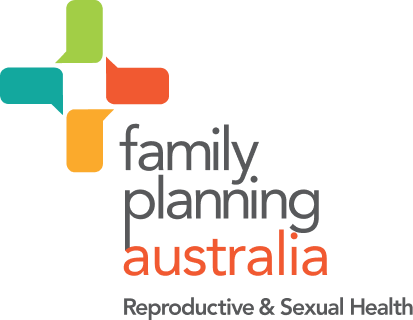Benign nipple changes include:
slit-like retraction
inversion that can be easily everted
Clinically abnormal or suspicious nipple changes include:
colour and skin texture change
fixed whole nipple inversion
ulceration
(2)
Benign nipple discharge is common and typically seen from multiple ducts, and is milky or greenish in colour. When investigating nipple discharge you should note its appearance and determine if the discharge occurs only with expression or spontaneously, and whether it is bilateral or unilateral and from a single or multiple ducts. Unilateral, spontaneous, bloody or serous discharge from a single duct raises the possibility of cancer, especially if it occurs in women over 60 years.
Cytology of the discharge can be performed:
A positive discharge cytology result is indicative of cancer (highly specific).
A negative discharge result cannot be used to rule out cancer (low sensitivity).
Imaging should include mammography and ultrasound.
Mammary duct ectasia (a benign condition) is associated with dilatation and inflammation of the ducts under the nipple and usually causes a bilateral yellow, green, or brown discharge from multiple ducts.(12)
Hyperprolactinaemia (high prolactin levels) may cause galactorrhoea. Aetiology includes endocrine causes, e.g. pituitary and thyroid disease; and drug causes, e.g. oral contraceptives, hormone therapy, antiemetics, antipsychotics, cocaine, and stimulants.(12)
...
Buy now
Paget’s disease of the nipple
Buy now
1.
Javed A, Lteif A. Development of the Human Breast. Semin Plast Surg. 2013;27(1):5-12.
Close
9.
Brennan M, Nehmat H, French J. Management of benign breast conditions (Part 2- breast lumps and lesions). Asutralian Family Physician 2005;34(4):253-5.
Close
10.
Tohno E, Cosgrove DO, Sloane JP. Ultrasound diagnosis of breast diseases. London: Churchill Livingstone 1994.
Close
11.
Brennan M, Nehmat H, French J. Management of benign breast conditions (Part 1- Painful Breasts). Australian Family Physician 2005;34:143-6.
Close
12.
Brennan M, Nehmat H, French J. . Management of benign breast conditions (Part 3- other breast problems). Australian Family Physician 2005;34(5):353-5.
Close
14.
NSW Breast Cancer Institute. Nipple discharge Australian Family Physician. 2005;34(5):357.
Close
15.
Iddon J, Dixon JM. Mastalgia. BMJ. 2013;347(bmj. f3288).
Close
17.
Salzman B, Fleegle S, Tully A. Common Breast Problems Australian Family Physician. 2012;86(4):343-9.
Close
18.
Hughes L, Mansel RE, Webster DJT. Benign disorders and diseases of the breast: Concepts and clinical management. London: Balliere-Tindall; 1989.
Close
19.
Barros A, Mottola J, Ruiz CA, Borges MN, Pinotti JA. Reassurance in the treatment of mastalgia. Breast Journal 1999;5(3):162-5.
Close
20.
Hadj M. Sports brassiere: is it a solution for mastalgia? . Breast Journal 2000;6(6):407-9.
Close
21.
Colak T, Ipek T, Kanik A, Ogetman Z, Aydin S. Efficacy of topical nonsteroidal anti-inflammatory drugs in mastalgia treatment. Journal of the American College of Surgeons 2003;196(4):525-30.
Close
22.
Srivastava A, Mansel RE, Arvind N, Prasad K, Dhar A, Chabra A Evidence-based management of mastalgia: a meta-analysis of randomised trials. Breast Journal 2007;16(5):503-12.
Close
23.
Skaane P, Bandos A, Gullien R. Comparison of digital mammography alone and digital mammography plus tomosynthesis in a population-based screening program. Radiology 2013;267(1):47-56.
Close
26.
Australian Institute of Health and Welfare. Cancer in Australia 2019. Canberra: AIHW; 2019.
Close
40.
Koo M, von Wagner C, Abel GA, McPhail S, Rubin GP, Lyratzopoulos G. Typical and atypical presenting symptoms of breast cancer and their associations with diagnostic intervals: Evidence from a national audit of cancer diagnosis. Cancer Epidemiol. 2017;48:140-6.
Close
41.
Nelson H, Tyne K, Naik A, Bougatsos C, Chan BK, Humphrey L. Screening for breast cancer: An update for the US Preventive Services Task Force. Annual Internal Medicine 2009;151(10):727-37.
Close
44.
Tingberg A, Zachrisson S. Digital mammography and tomosynthesis for breast cancer diagnosis. Expert Opinion Medical Diagnosis 2011;5(6):517-26.
Close
46.
Baker J, Lo JY. Breast tomosynthesis: state-of-the-art and review of the literature. Academic Radiology 2011;18:1298-310.
Close
47.
Royal Australian College of General Practitioners (RACGP). Guidelines for preventive activities in general practice. 9th Edition. Melbourne: RACGP; 2012.
Close
50.
Marmot M, Altman DG, Cameron DA, et al. The benefits and harms of breast cancer screening: an independent review: A report jointly commissioned by Cancer Research UK and the Department of Health (England). British Journal of Cancer 2013;108(11):2205-40.
Close
